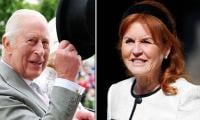Capital suggestion
Exports are declining. Imports are going up. Workers’ remittances are declining. Coalition Support funding is drying up. Over the past three months, foreign exchange reserves have gone down by a hefty $2 billion. Lo and behold, Pakistan’s current account deficit – the difference between dollar outflows and inflows – swelled by a whopping 90 percent in the first seven months of the current fiscal year (compared to the same period last year).
Here’s the record of our dollar borrowings between June 2013 and June 2016: the World Bank $9.7 billion, the IMF $6.2 billion, bilateral $3.6 billion, bonds $3.5 billion and commercial banks $1.8 billion. The total: $25 billion. Over the next 15 months, we must pay back a colossal $6.5 billion in principal payments.
Over the last seven months, Pakistan obtained fresh foreign loans worth $4.6 billion. Yes, over the past 44 months Pakistan obtained new foreign loans to the tune of $30 billion. For the record, over the past year the international price of oil has moved from $28 a barrel to $54 a barrel – and our demand for oil is quite inelastic (meaning the quantity of oil we import is more or less insensitive to changes in price). In effect, our oil import bill is swelling up like a balloon (and shall swell further if the international price of oil continues its upward trend).
The differential in the rate of inflation also plays a very critical role in determining the international value of a currency. Pakistan’s rate of inflation is generally higher than the prevailing rate of inflation in our trading partners, and that differential has over time made our rupee overvalued. Yes, it can be argued that because our imports are a lot more than our exports we ought to keep the rupee slightly overvalued. Not to forget that an overvalued rupee makes our goods uncompetitive in the international markets. So the real issue is how much of an overvaluation is really good for Pakistan?
Consider this: the real effective exchange rate (REER) is the “weighted average of a country’s currency relative to an index or basket of other major currencies, adjusted for inflation”. According to the IMF, “Pakistan’s currency is overvalued by as much as 20 percent and is contributing to the country’s declining exports…..”.
I agree with the IMF that our rupee is overvalued but I differ on the quantum of overvaluation. If REER, in conjunction with Pakistan’s economic interests, is to be used as a yardstick, our rupee is overvalued by as much as 10-12 percent.
Who is keeping the rupee overvalued? There’s evidence that the State Bank of Pakistan (SBP) is intervening in the foreign currency market. Yes, the SBP is being successful in its intervention and the credit for that goes to the governor, Ashraf Mahmood Wathra.
On March 2, the Economic Coordination Committee (ECC) of the cabinet was briefed by Secretary for Finance Tariq Bajwa. The finance secretary briefed the ECC on “rising inflation, expanding current account deficit, falling exports, lower industrial output, declining remittances and a deteriorating trade balance”.
In my opinion, we have now reached a point where the rupee’s overvaluation is no longer in our best economic interest. We need to buck the trend. We need to make our exports competitive in the international markets once again. And in my opinion a rupee trading in the range of Rs112 to-a-dollar to Rs115 to-a-dollar will best serve our economic interests.
The writer is a columnist based in Islamabad.
Email: farrukh15@hotmail.com Twitter: @saleemfarrukh















